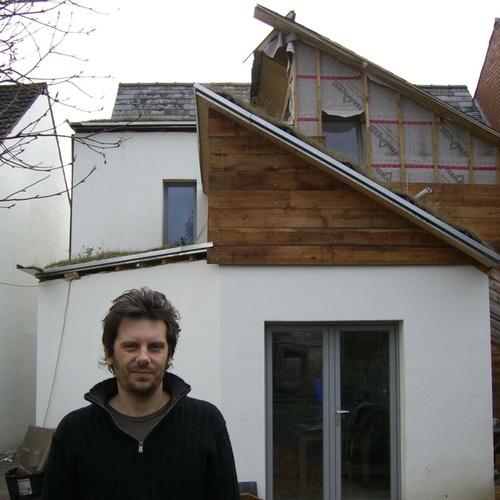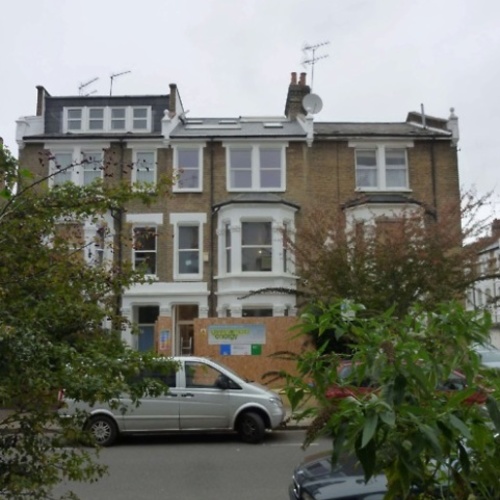Image Credit: Prewett Bizley Architects
Image Credit: Prewett Bizley Architects The rear wall of the building was extended back about 2 meters to compensate for floor space that would have been lost to thicker, better-insulated interior walls. The living room of the remodeled Victorian. A layer of oriented-strand board was placed over the insulation materials installed in all walls of the house, with tape on each seam to achieve airtightness. This image shows a portion of the front wall.
Energy efficiency remodels can present plenty of technical and financial challenges, but sometimes the biggest challenge for clients and contractors is to be patient. That seemed to be the case, at least, for a team that applied Passivhaus standards to the refurbishment of a three-story Victorian townhouse in a conservation area of northeast London.
As explained in a recent edition of the UK-based sustainability newsletter Building, the project took two and a half years and plenty of perseverance for both the permitting process – which began with preliminary discussions in late 2007 and finally ended with formal permissions in the early summer of 2008 – and the testing of design and construction strategies that would minimize thermal bridging, maximize airtightness, and deliver a comfortable home that still met conservation-area criteria.
Space-eating walls
One problem was that the house had about 1,075 sq. ft. of space that would be compromised considerably once the interior walls were reconstructed with proper insulation. About 300mm of insulation would be used for the front wall, 200mm for the rear wall. The shared walls of the house also would be insulated and soundproofed with about 60mm of material, reducing the living space further. Robert Prewett, of Prewett Bizley Architects, told Building that the problem was addressed by extending two stories of the rear wall 2 meters, reconfiguring the stairs, and creating a roof extension, all of which left the occupants with 1,292 sq. ft. of interior space rather than the 915 they would have ended up with otherwise.
A front-wall cavity was created with two 70mm layers of Knauf Polystud (polystyrene) battens under a layer of oriented-strand board whose seams were sealed with plenty of tape. A layer of OSB, seam-sealed with tape, was used on all of the interior walls and was in fact the principal means of achieving airtightness, although it took some doing to find and seal all the air leaks and get the air leakage rate down to one cubic meter per hour for every square meter of space. Triple-glazed windows were installed on the back of the house, although for the front the remodelers went with a double-glazed window called Slimlite, whose slender sash and overall look is more in keeping with conservation-area constraints.
At the end of it all, the remodeled Victorian performed very close to – but did not quite meet – the Passivhaus standard, although it should emit 76% less carbon than the original home, said Prewett, who provided GBA with the progress photos shown here. The lingering issue is what it would cost to achieve this level of performance in a house that has seen more than a century of service. Whereas a standard remodel for the house might have run $185,000 to $280,000, the Passivhaus target added another $93,000. Prewett told Building, however, that experience with a few more projects of this sort would shave about $50,000 off that extra cost.
Weekly Newsletter
Get building science and energy efficiency advice, plus special offers, in your inbox.
















0 Comments
Log in or create an account to post a comment.
Sign up Log in